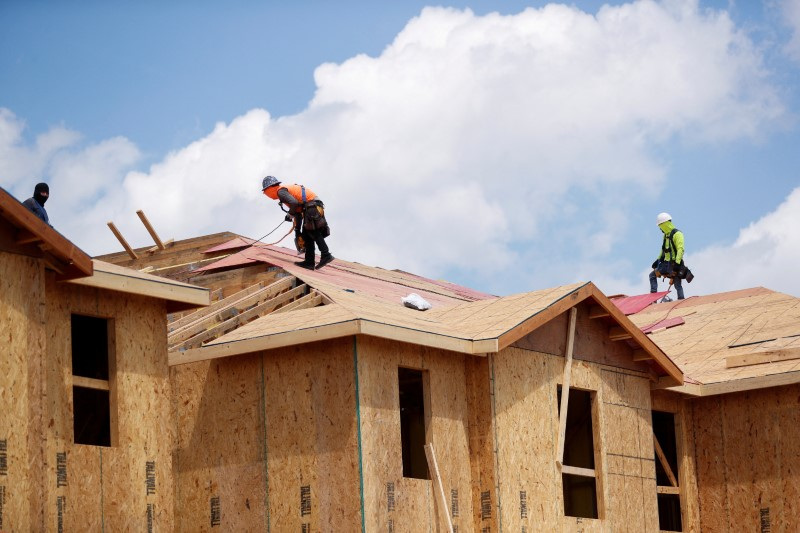By Amina Niasse
NEW YORK (Reuters) -U.S. housing prices showed further signs of stabilizing in June, according to two reports out Tuesday that signaled the lengthy run of softening sales prices may be bottoming out.
Home purchase prices increased by 3.1% year-over-year in June, compared with a 2.9% rise in May, marking the first pick-up in annual price growth since February 2022, data from the Federal Housing Finance Agency showed. A separate national price index from S&P CoreLogic Case-Shiller was unchanged from a year earlier in June after posting year-over-year declines in the previous two months.
Both reports showed prices rose modestly month-over-month.
For more than a year, rising mortgage rates on the back of aggressive interest rate hikes by the Federal Reserve have cut into sales volumes as more homeowners forgo selling their houses. The limited inventory has helped keep prices high as well, although annual price growth has moderated significantly from rates around 20% in early 2022.
House prices rose 3.0% between the second quarters of 2022 and 2023, FHFA said.
“U.S. house prices appreciated at a slightly higher rate in the second quarter amid low inventory,” said Anju Vajja, principal associate director in FHFA’s Division of Research and Statistics. “While prices in a number of Western states continued to decline year-over-year, house prices rose in all states quarter-over-quarter.”
Craig Lazzara, managing director for S&P DJI, said the findings point toward a recovering housing market, even amid higher mortgage rates. The average interest rate for a 30-year mortgage has shot above 7% to the highest level in more than two decades.

"We recognize that the market’s gains could be truncated by increases in mortgage rates or by general economic weakness, but the breadth and strength of this month’s report are consistent with an optimistic view of future results,” he said.
FHFA's data showed June’s year-over-year gains were strongest in the East North Central and New England regions, up by 5.4% and 6.8%, respectively. On a city basis, the Case-Shiller data showed Chicago and Cleveland experiencing the greatest price accelerations.